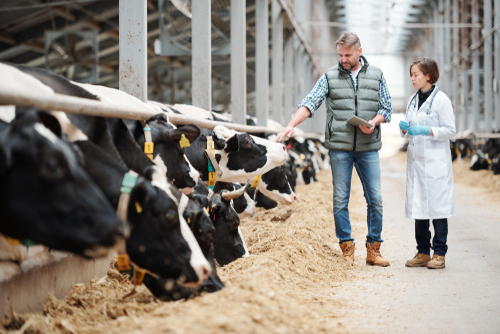Minnesota’s agricultural sector faces a critical crisis as the state declares a state of emergency due to multiple strains of bird flu ravaging farms. The declaration opens up crucial financial support for farmers, but concerns grow over the potential spread of these deadly diseases. This development highlights the ongoing challenges faced by American farmers and the need for robust agricultural policies to protect our food supply.
Minnesota Takes Action to Support Farmers
The Minnesota Department of Agriculture’s Rural Finance Authority Board has established an emergency in response to three major disease outbreaks affecting livestock. These outbreaks include avian metapneumovirus (aMPV), highly pathogenic avian influenza (HPAI), and the H5N1 flu virus, all of which pose significant threats to the state’s poultry industry.
– game show host president too busy scamming with doge
Minnesota declares state of emergency as diseases cripple Midwestern farms #NewsBreak https://t.co/ZOC7bno10B
— David Dodson (@KeepinI_real) February 19, 2025
This state of emergency declaration is a crucial step in providing support to affected farmers. It allows them to access zero-interest disaster recovery loans specifically designed to address livestock losses. These funds can be used for expenses not covered by insurance, including flock replacement, building improvements, or revenue loss due to disease outbreaks.
The Extent of the Outbreak
The severity of the situation in Minnesota is evident from the staggering numbers reported. Since April 2024, the state has recorded 871 positive tests for avian metapneumovirus, which is likely an undercount. This highly infectious respiratory disease affects poultry, causing immunosuppression and high mortality rates.
Equally concerning is the spread of highly pathogenic avian influenza (HPAI). Since March 2022, Minnesota has confirmed 185 cases of HPAI, impacting a staggering 9.1 million domestic birds. This contagious and often fatal disease poses a major threat to the entire poultry industry, potentially disrupting food supply chains and impacting consumers nationwide.
Broader Implications and Federal Response
The bird flu outbreak extends beyond poultry, affecting other animals including dairy cows. Alarmingly, it has also spread to humans, with a dairy worker in Nevada recently infected by a new H5N1 strain known as D1.1. This development raises serious concerns about the potential for wider human transmission and the need for increased vigilance.
“This is a serious situation,” warns Sam Scarpino from Northeastern University, highlighting the presence of at least two distinct H5N1 strains affecting cattle, poultry, and humans in the United States.
In response to the growing crisis, the federal government is facing pressure to take decisive action. The appointment of Dr. Gerald Parker to the White House Office of Pandemic Preparedness and Response Policy is seen as a positive step in addressing the H5N1 situation. However, more comprehensive measures are needed to control the outbreak, mitigate agricultural costs, and reduce the risk of human infections.
Sources:
Minnesota declares state of emergency as diseases cripple Midwestern farms
Minnesota declares state of emergency as diseases cripple Midwestern farms

